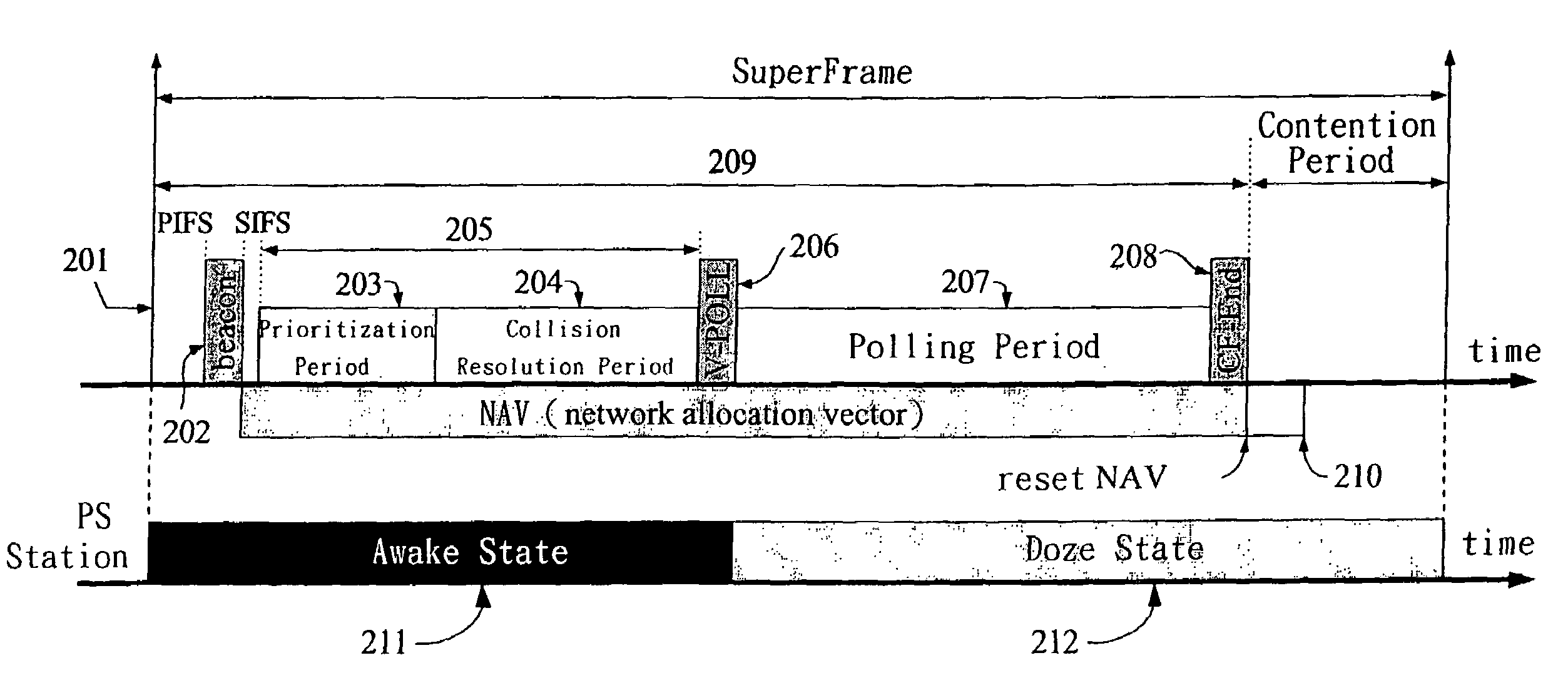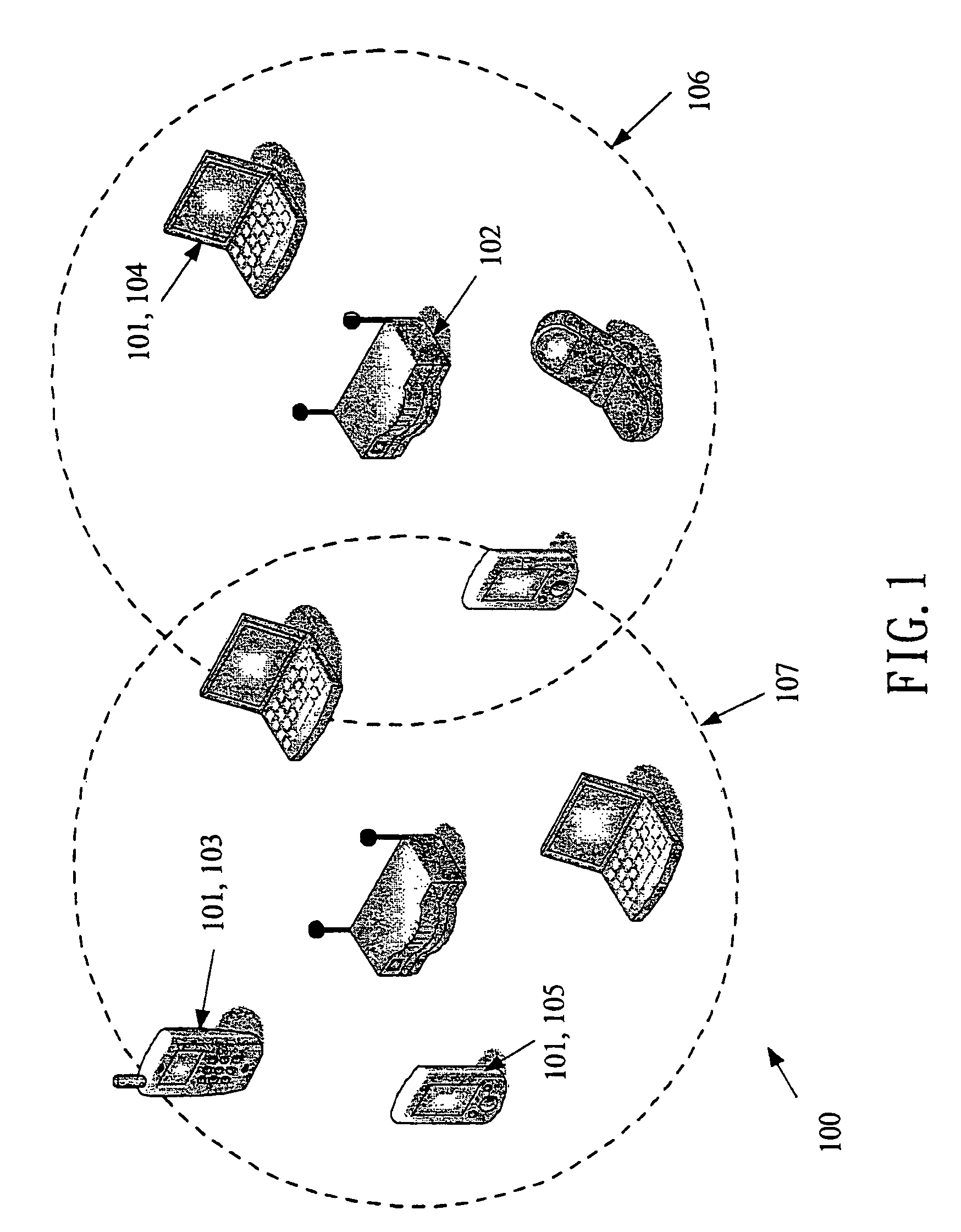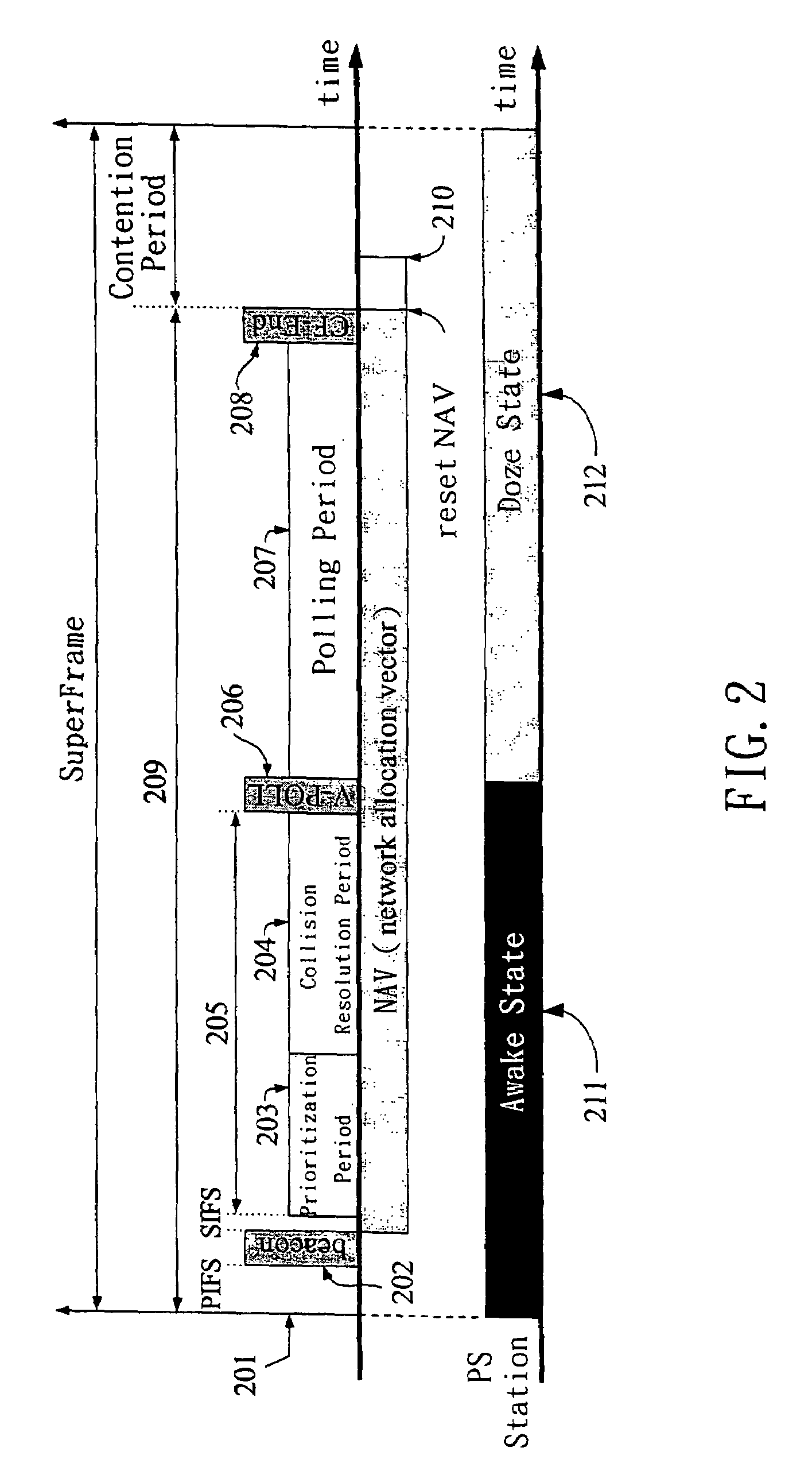Medium access control methods with quality of service and power management for wireless local area networks
a technology of access control and wireless local area network, applied in the field of medium access control (mac) methods for wireless local area networks, can solve the problems of violating the quality of already-admitted connections, consuming very low power, etc., and achieve the effect of reducing unnecessary collisions and retransmissions
- Summary
- Abstract
- Description
- Claims
- Application Information
AI Technical Summary
Benefits of technology
Problems solved by technology
Method used
Image
Examples
Embodiment Construction
[0038]FIG. 1 shows a configuration of a wireless area network (WLAN) 100 consisting of two basic service sets (BBSs). In FIG. 1, the BSS 106 includes an AP 102 and a finite number of mobile stations (or stations, for short) 101, such as wireless phones 103, PDAs 105, laptops 104, or other devices with wireless interfaces. Each station can operate either in the active mode or power-saving (PS) mode. A station in the PS mode is referred to as a PS station. A PS station can save the power consumption by switching to the doze state. Each station should associate with an AP (or reassociate with a new AP) to become a member of an infrastructure BSS. When the association request is granted, the AP responds with a status code of 0 (successful) and the Association ID (AID). The AID is an integer identifier used to logically identify the mobile station within the BSS. On the other hand, a data frame or a flow typically has a priority. For example, a voice flow generated by the wireless phone ...
PUM
 Login to View More
Login to View More Abstract
Description
Claims
Application Information
 Login to View More
Login to View More - R&D
- Intellectual Property
- Life Sciences
- Materials
- Tech Scout
- Unparalleled Data Quality
- Higher Quality Content
- 60% Fewer Hallucinations
Browse by: Latest US Patents, China's latest patents, Technical Efficacy Thesaurus, Application Domain, Technology Topic, Popular Technical Reports.
© 2025 PatSnap. All rights reserved.Legal|Privacy policy|Modern Slavery Act Transparency Statement|Sitemap|About US| Contact US: help@patsnap.com



